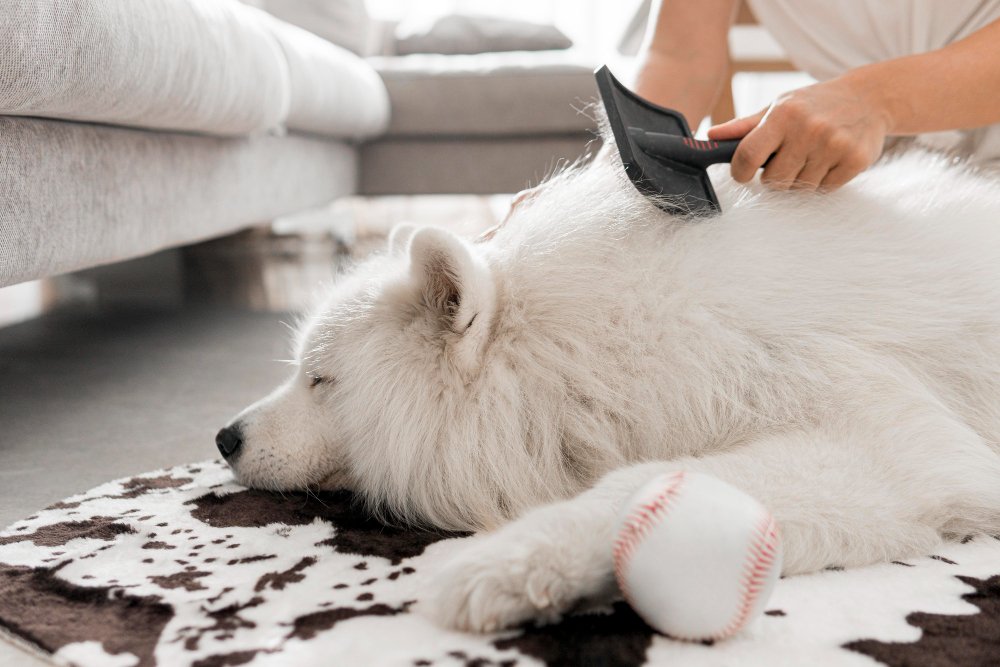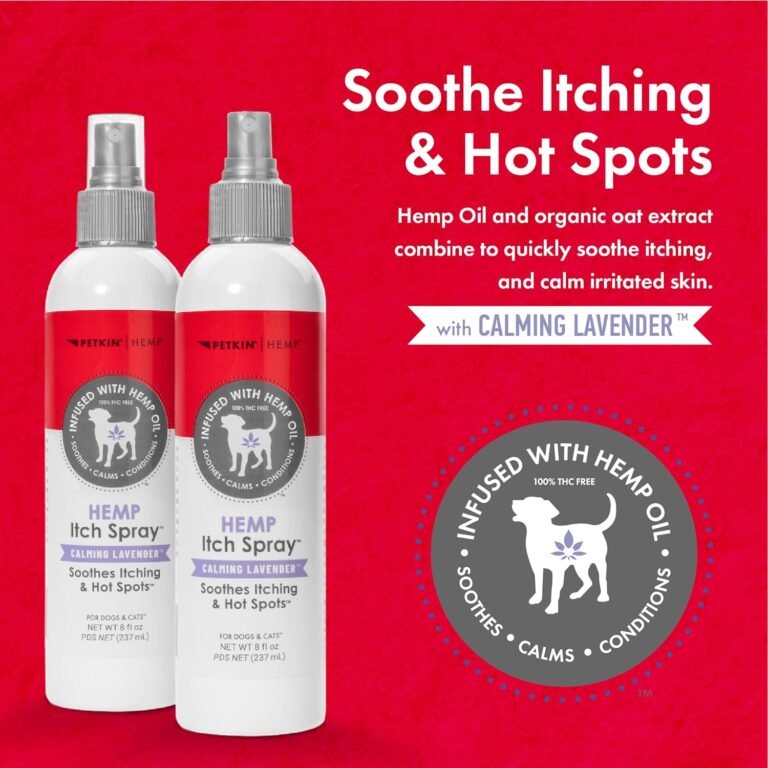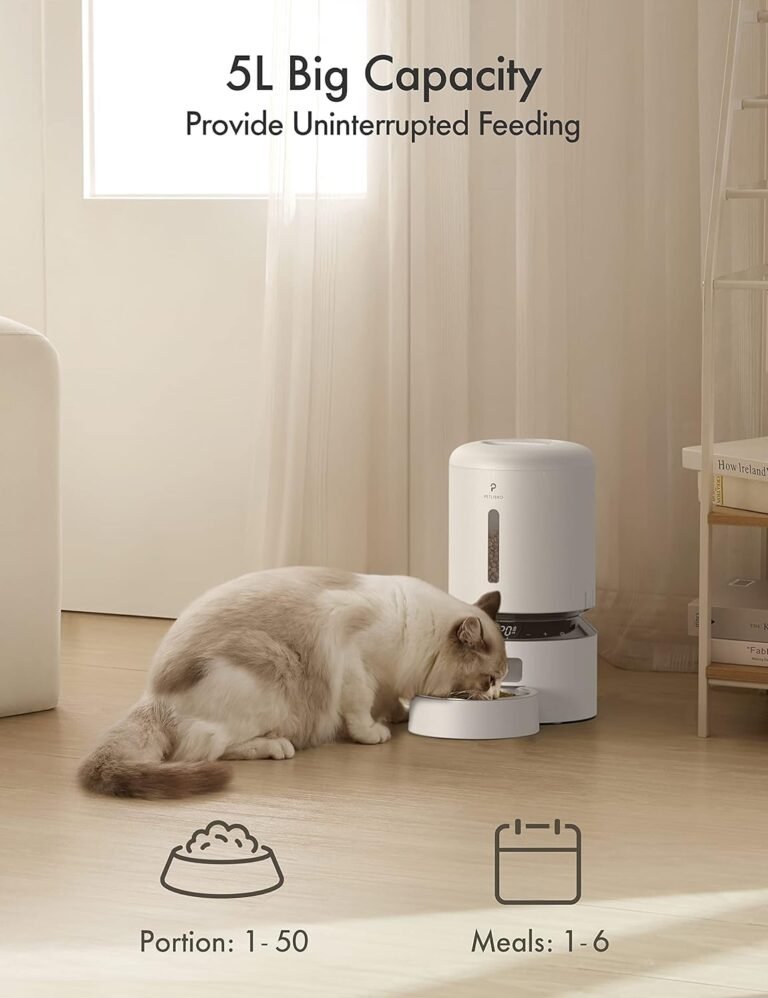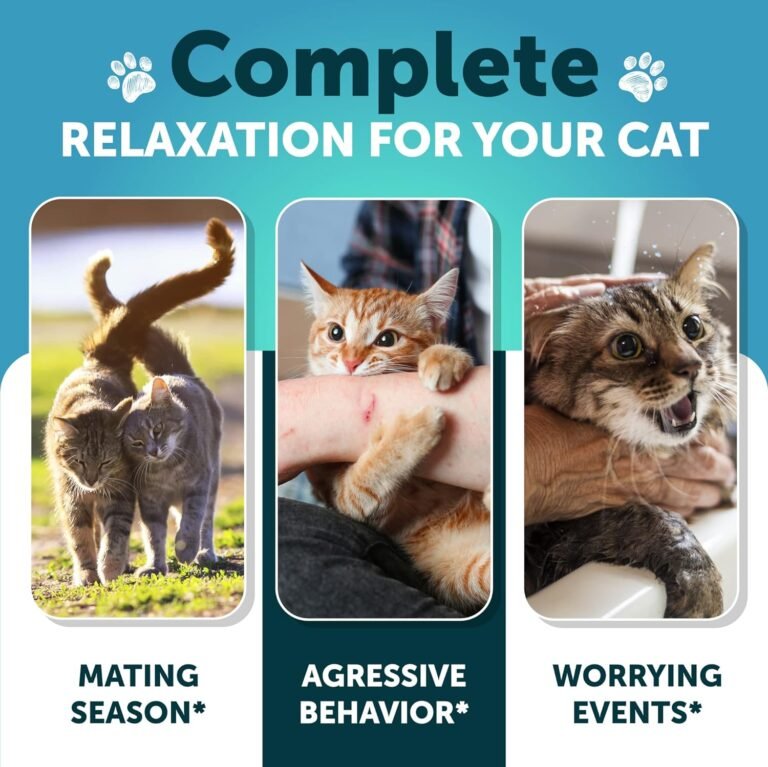Best Pet hair cleaning hacks 101
Pet hair can be a persistent problem for pet owners, but with the right pet hair cleaning hacks, it can be managed efficiently. Understanding the types of pet hair, why it is a problem, and the common areas affected by it is crucial. Effective cleaning techniques like regular vacuuming, using lint rollers, brushing your pet, and investing in a pet hair vacuum can help keep your home clean.
Cleaning specific surfaces such as upholstery, carpets, hardwood floors, and clothing requires specific methods. Preventing pet hair build-up through regular grooming, using pet hair repellent, creating pet-free zones, and washing pet bedding frequently is essential. Lastly, dealing with allergies by using HEPA filters, keeping the air clean, using allergy-friendly cleaning products, and consulting with an allergist can provide relief. Here are the key takeaways from this article:
Key Takeaways
- Understanding the types of pet hair and the common areas affected by it is crucial for effective cleaning.
- Regular vacuuming, using lint rollers, brushing your pet, and investing in a pet hair vacuum are effective cleaning techniques.
- Cleaning specific surfaces like upholstery, carpets, hardwood floors, and clothing requires specific methods.
- Preventing pet hair build-up through regular grooming, using pet hair repellent, creating pet-free zones, and washing pet bedding frequently is essential.
- Dealing with allergies by using HEPA filters, keeping the air clean, using allergy-friendly cleaning products, and consulting with an allergist can provide relief.
Understanding Pet Hair
Types of Pet Hair
When it comes to pet hair, there are different types that you need to be aware of. Each type of pet hair has its own characteristics and requires specific cleaning techniques. Understanding the types of pet hair can help you effectively manage and remove it from your home.
Here are the most common types of pet hair:
-
Dog Hair: Dogs have different types of hair, including short, medium, and long hair. Some dog breeds, such as Labrador Retrievers and Siberian Huskies, have thick double coats that shed heavily.
-
Cat Hair: Cats also have different types of hair, including short, medium, and long hair. Some cat breeds, such as Maine Coons and Persians, have long, thick coats that require regular grooming.
-
Other Pet Hair: Besides dogs and cats, other pets like rabbits, guinea pigs, and hamsters also shed hair. These small animals may have shorter hair, but it can still accumulate and cause allergies.
It’s important to identify the type of pet hair you’re dealing with to choose the most effective cleaning methods and tools. By understanding the characteristics of each type of pet hair, you can keep your home clean and free from unwanted fur.
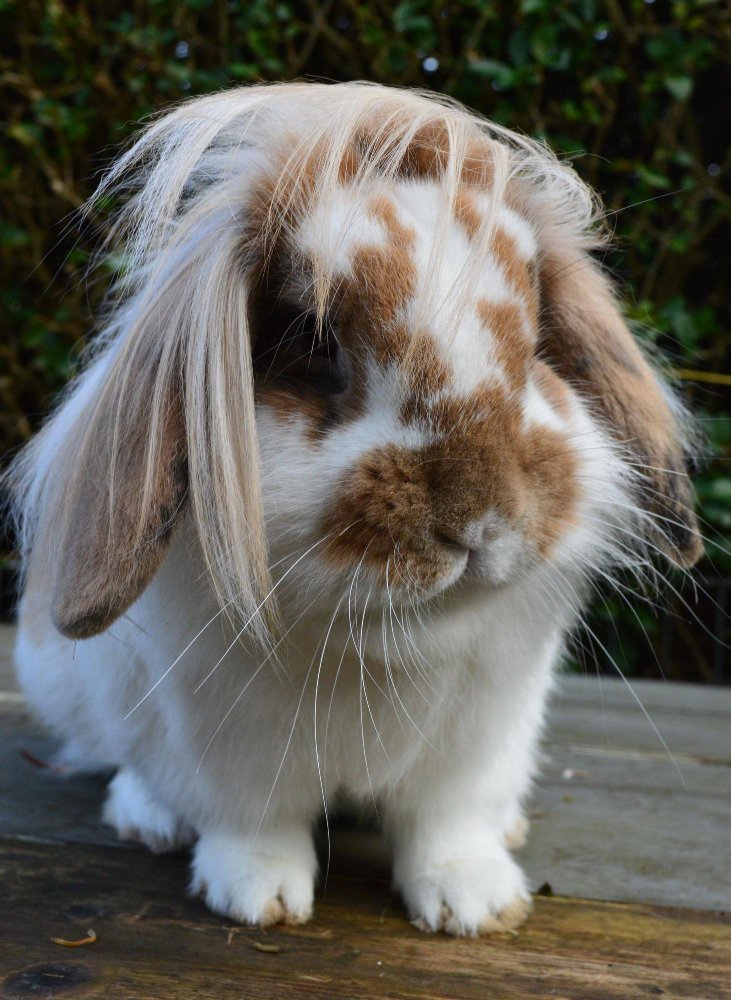
Why Pet Hair is a Problem
Pet hair can be a nuisance, especially if you have allergies or a sensitive respiratory system. It can trigger allergic reactions and asthma attacks, making it difficult to breathe comfortably in your own home. Additionally, pet hair can accumulate on furniture, carpets, and clothing, creating a messy and unclean environment. Regular cleaning is necessary to maintain a hygienic living space and prevent the spread of pet dander. Investing in automatic pet feeders can also help reduce shedding by providing a balanced diet for your pet, promoting healthier skin and coat. By addressing the issue of pet hair, you can create a more comfortable and enjoyable living environment for both you and your furry friend.
Common Areas Affected by Pet Hair
Pet hair can be found in various areas of your home, and it can be quite a nuisance to deal with. Regular vacuuming is essential to keep your floors and carpets free from pet hair. Additionally, using lint rollers on furniture and clothing can help remove any stray hairs. Another effective method is brushing your pet regularly to minimize shedding. Investing in a pet hair vacuum can also make the cleaning process more efficient and hygienic.
To ensure that you effectively manage pet hair in your home, here are some additional tips:
- Mop tile and hardwood floors at least twice a week, especially in high-trafficked areas like the living room and kitchen.
- Use a pet hair removal tools to clean up loose fur from upholstery.
- Wash bedding, including pet bedding, every week to remove any accumulated pet hair.
Remember, keeping common areas free from pet hair not only improves the cleanliness of your home but also helps maintain a hygienic environment for you and your family.
pet hair cleaning hacks
Regular Vacuuming
Regular vacuuming is essential for managing pet hair in your home. It is recommended to purchase a high-quality vacuum cleaner with various levels of suction to effectively remove pet hair from different surfaces. When vacuuming, avoid using the straight-line method and instead move the vacuum in a variety of directions to ensure all areas are covered. For carpets, a rubber rake can be used to gather any stray hairs that the vacuum may have missed. Additionally, keeping lint brushes close at hand is helpful for removing pet hair from upholstery. Remember to clean your clothes with a lint brush before sitting on the couch to prevent transferring pet hair. Keeping stains from setting in is also important to maintain a clean and hair-free environment. By regularly vacuuming and following these tips, you can effectively manage pet hair in your home.

Using Lint Rollers
When it comes to cat and dog hair control, lint rollers are a quick and inexpensive hack that can be used to remove pet hair from a variety of surfaces. Whether it’s clothes, furniture, or even curtains and bed sheets, a lint roller can swiftly and effectively lift pet hair off these materials. It’s a lifesaver for pet owners who want to keep their homes clean and tidy. In addition to lint rollers, there are other options you can try for pet hair removal. Consider using duct tape or a slightly damp dust mop head to get rid of pet hair. These alternatives can be just as effective in tackling pet hair on different surfaces. Remember to always choose the method that works best for you and your home.
Brushing Your Pet
Regular brushing is an essential part of pet hair management. It not only helps to remove loose fur but also promotes a healthy coat and reduces shedding. Brushing your pet regularly can prevent tangles and mats from forming, which can be uncomfortable for your furry friend. Additionally, it allows you to monitor your pet’s health and detect any issues early on. To brush your pet effectively, follow these steps:
- Start by gently brushing your pet’s fur, working from the head to the tail. Use a brush that is suitable for your pet’s coat type.
- Pay special attention to areas where fur tends to tangle, such as behind the ears and under the armpits.
- If you encounter any knots or tangles, use a detangling spray or a mat comb to gently remove them.
- While brushing, take the opportunity to check for any signs of skin irritation, fleas, or ticks.
By incorporating regular brushing into your pet’s grooming routine, you can keep their coat healthy and minimize the amount of loose fur in your home.
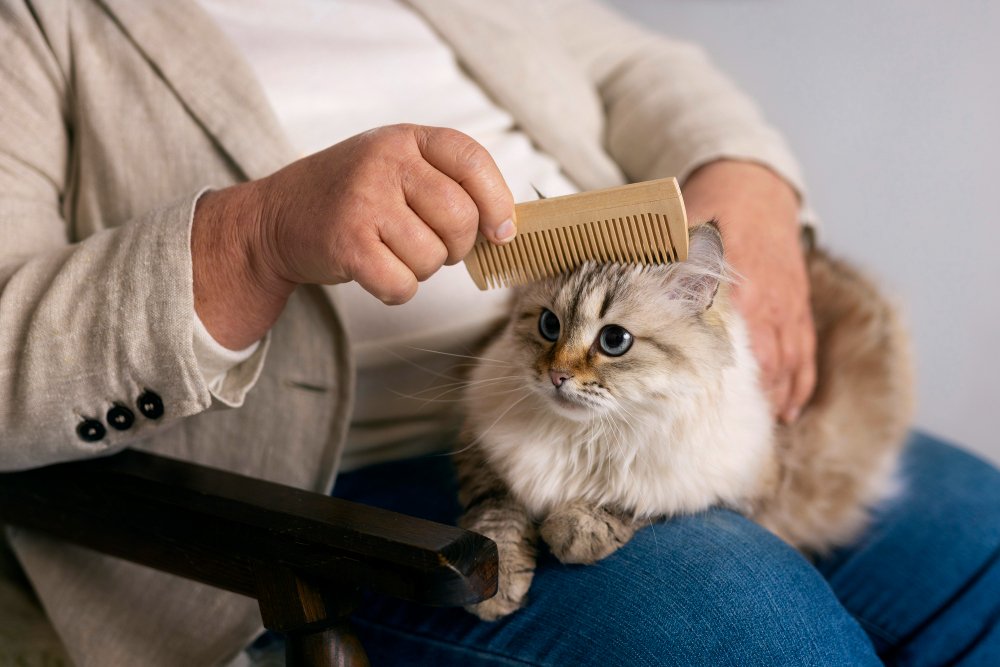
Investing in a Pet Hair Vacuum
When it comes to managing pet hair, investing in a pet hair vacuum is a game-changer. A pet hair vacuum is specifically designed to tackle the unique challenges of pet hair removal, making it much more effective than a regular vacuum cleaner. With its powerful suction and specialized attachments, a pet hair vacuum can easily remove pet hair from carpets, upholstery, and hard floors. It is designed to capture even the most stubborn pet hair, ensuring that your home stays clean and hair-free.
To help you make an informed decision, here are some key factors to consider when choosing a pet hair vacuum:
- Suction power: Look for a vacuum with strong suction power to effectively lift and remove pet hair from different surfaces.
- Filtration system: Opt for a vacuum with a high-quality filtration system to prevent pet hair and allergens from being released back into the air.
- Attachments: Check for attachments specifically designed for pet hair removal, such as a motorized brush or a pet hair tool.
Remember, investing in a pet hair vacuum is a worthwhile investment as it helps to significantly reduce pet hair around your home. Say goodbye to constantly battling with pet hair and enjoy a clean and hair-free living space.
Cleaning Specific Surfaces
Removing Pet Hair from Upholstery
If your pet loves lounging on your upholstery, you may be wondering how to get pet hair off your couch. There are tools, like FURemover’s Pet Hair Removal & Lint Brush ($7.50), that come in clutch to clean up all that loose fur build-up. Washing your bedding every week can help keep it fur-free and smelling great. Mopping tile and hardwood floors is an effective way to make sure you clean up as much pet hair as possible. For high-trafficked areas, like the living room and kitchen, aim for twice a week. For other not-so-frequently used spaces, like a guest room, aim for every 10 days. Use a Pet Hair Removal Tool on Furniture. It’s important to stress that it will take some time to remove all the hair from a whole sofa or loveseat. Even considering these limitations, we think using this tool to remove pet hair on some types of upholstered pieces is more than a hack — it’s a necessity!
Cleaning Pet Hair from Carpets
Mopping tile and hardwood floors is an effective way to make sure you clean up as much pet hair as possible. For high-trafficked areas, like the living room and kitchen, aim for twice a week. For other not-so-frequently used spaces, like a guest room, aim for every 10 days. Use a Pet Hair Removal Tool on Furniture If your pet loves lounging on your upholstery, you may be wondering how to get pet hair off your couch. There are tools, like FURemover’s Pet Hair
Getting Rid of Pet Hair on Hardwood Floors
When it comes to hardwood floors, pet hair can be quite a challenge to remove. Vacuuming alone may not be enough to get rid of every strand of hair. To ensure a thorough clean, consider the following tips:
-
Mop Hard Floors: Mopping is an effective way to remove pet hair from hardwood floors. Aim to mop high-trafficked areas like the living room and kitchen at least twice a week, and less frequently used spaces like a guest room every 10 days.
-
Use a Pet Hair Removal Tool on Furniture: If your pet loves lounging on your upholstery, you may find it difficult to remove pet hair from your couch. Invest in a pet hair removal tool to easily clean up loose fur build-up.
-
Wash Bedding Every Week: If your pet enjoys snuggling up on your bed, make sure to wash your bedding every week to remove any accumulated pet hair.
Remember, keeping your hardwood floors free from pet hair not only improves the cleanliness of your home but also helps maintain the longevity of your flooring.
Removing Pet Hair from Clothing
When it comes to removing pet hair from your clothing, there are a few effective techniques you can try. One popular method is using sticky rollers for pet hair removal. These rollers are designed to easily lift pet hair off your clothes, leaving them clean and hair-free. Another option is using duct tape, which can also be effective in removing pet hair from clothing. Simply wrap the tape around your hand with the sticky side facing out and gently press it onto the fabric to pick up the hair. Additionally, you can try using a slightly damp dust mop head to remove pet hair from your clothing. Just spritz the bottom of the mop with water and gently swipe it over your clothes to lift off the hair. Remember to let your clothes air dry after using this method to avoid any water stains. Overall, these techniques can help you keep your clothes free from pet hair and looking fresh.
Preventing Pet Hair Build-up
Grooming Your Pet Regularly
Grooming your pet regularly is essential for maintaining their coat health and managing shedding. It not only keeps your furry friend looking their best but also helps prevent matting and keeps their coat in top condition. Establishing a consistent grooming routine is key to ensuring your pet’s coat stays healthy. Regular grooming sessions with the vacuum can help manage shedding and remove loose fur. Monitor your pet’s skin condition after grooming to ensure there are no signs of redness, irritation, or discomfort. If you notice any issues, it’s best to consult a veterinarian for further evaluation and care.
When grooming your pet, it’s important to exercise caution and be gentle, especially in sensitive areas like the face, ears, and belly. Use lighter suction and be extra gentle in these regions to ensure your pet’s comfort. Regular maintenance and cleaning of the vacuum attachments are necessary to prevent clogging and maintain optimal suction power during grooming sessions. Positive reinforcement and rewards can also help make grooming a more enjoyable experience for your pet. Offer treats, praise, or playtime after successful grooming sessions to reinforce good behavior.
Remember, grooming is not only beneficial for managing shedding but also for your pet’s overall well-being. By keeping their coat clean and healthy, you can reduce the amount of pet hair in your home and improve indoor air quality. So, make grooming a regular part of your pet care routine and enjoy a cleaner, happier home.
Using Pet Hair Repellent
To further prevent pet hair build-up in your home, consider using pet hair repellent. This product is designed to create a barrier that helps repel pet hair from sticking to surfaces. Simply spray the repellent on furniture, carpets, and other areas prone to pet hair accumulation. The repellent works by making the surfaces less attractive to pet hair, reducing the amount of hair that gets deposited. It’s a simple and effective way to keep your home cleaner and reduce the need for frequent cleaning. By using pet hair repellent, you can maintain a cleaner and more hair-free environment for you and your pets.
Creating Pet-Free Zones
Creating designated pet-free zones in your home can help minimize the amount of pet hair in certain areas. Designate specific rooms or areas where your pet is not allowed to enter, such as bedrooms or the living room. This will create clean and hair-free spaces for you and your family to enjoy. Consider using baby gates or pet barriers to block off these areas and prevent your pet from accessing them. Another option is to train your pet to stay out of certain rooms by using positive reinforcement techniques. By creating pet-free zones, you can maintain a cleaner and more hair-free environment in your home.
Washing Pet Bedding Frequently
If you have a pet that loves snuggling up on your bed, your blankets, sheets, and pillows can collect a lot of unwanted cat and dog hair. Washing your bedding every week can help keep it fur-free and smelling great. It’s important to maintain a clean sleeping environment for both you and your pet. Regularly washing your pet’s bedding not only removes pet hair but also helps prevent the buildup of allergens and bacteria. By keeping your pet’s bedding clean, you are promoting their whisker wellbeing and ensuring a comfortable and healthy resting place for them.
Dealing with Allergies
Using HEPA Filters
When it comes to HEPA filters, it’s important to understand their effectiveness in removing particles from the air. HEPA filters are able to remove 99.9% of particles that are 0.3 microns in size. This includes bacteria, dust, pollen, and other airborne particles. Unlike filters labeled as HEPA-type or HEPA-grade, True HEPA filters meet the U.S. Department of Energy’s standards for filtration. So, if you want the best results in improving air quality and reducing pet hair, look for air purifiers that have True HEPA filters. These filters have been tested and proven to be highly efficient. Some models even offer indicators or subscription services for filter replacement, making maintenance easier for you.
Keeping the Air Clean
Replace your air filters. This may seem like a weird suggestion for keeping your house clean in your pet-friendly house, but remember what the air filter is actually there for. It collects dirt, including pet dander and hair. Frequently changing your air filter will help keep your home’s air free of extra pet hair. This ought to reduce the amount of hair on your furnishings.
Hire Professional Cleaners. For deep cleaning, use a house cleaning service. Pet owners who want to maintain a clean home can gain from using a professional cleaning service. Tell them you have a dog so they can get the necessary tools to remove dog hair and maintain a fresh scent and appearance in your home.
Using Allergy-Friendly Cleaning Products
When it comes to managing pet hair and allergies, using allergy-friendly cleaning products is essential. These products are specifically designed to reduce allergens in your home and provide a safer environment for both you and your furry friend. Look for cleaning products that are hypoallergenic and free from harsh chemicals that can irritate sensitive skin. Additionally, opt for fragrance-free options to minimize the risk of triggering allergies. By using allergy-friendly cleaning products, you can effectively remove pet hair and reduce allergens in your home, making it a more comfortable space for everyone.
Consulting with an Allergist
Consulting with an allergist is an important step in managing your pet allergies. An allergist is a medical professional who specializes in diagnosing and treating allergies. They can help determine the specific allergens that are causing your symptoms and develop a personalized treatment plan. During your consultation, the allergist may perform allergy tests, such as skin prick tests or blood tests, to identify the specific allergens that trigger your allergies. They can also provide guidance on lifestyle changes and medications that can help alleviate your symptoms. Cat feeder comparison is not directly related to consulting with an allergist, but it can be helpful in managing pet allergies by reducing exposure to pet dander. Here are some tips to consider when comparing cat feeders:
Dealing with allergies can be a challenging task for pet owners. At Whisker Wellbeing, we understand the importance of holistic and natural care for pets. Our website, Whisker Wellbeing, offers a wide range of products, including CBD, hemp, and other natural options, all designed to enhance the physical and emotional quality of life of pets. Whether your furry friend is suffering from seasonal allergies or food sensitivities, we have the solutions to help. Visit our website today to explore our products and give your pet the care they deserve.
Conclusion
Managing pet hair can be a challenge, but with the right cleaning hacks, it’s possible to keep your home fur-free. Regular grooming is essential to minimize shedding, especially for long-haired dogs. Investing in a robot vacuum and an air purifier can help remove pet hair and dander from your home. Covering your furniture and using lint rollers or duct tape are quick and effective ways to remove pet hair from surfaces. Additionally, regularly dusting surfaces with a dryer sheet and using a mop with a reusable microfiber mop head can help keep your home clean. Remember to replace your air filters frequently to reduce pet hair in the air. And if you need a deep clean, consider hiring professional cleaners who specialize in pet-friendly homes. By implementing these cleaning hacks, you can enjoy a clean and hair-free home while still enjoying the company of your beloved pets.
Frequently Asked Questions
How often should I groom my pet?
The frequency of grooming depends on your pet’s breed and coat type. Generally, it is recommended to groom your pet at least once every 4-8 weeks.
What is the best way to remove pet hair from upholstery?
To remove pet hair from upholstery, you can use a vacuum cleaner with a brush attachment, a lint roller, or a damp cloth. You can also try using a rubber glove or a squeegee to gather the hair into clumps and then vacuum it up.
How can I prevent pet hair build-up on my clothes?
To prevent pet hair build-up on your clothes, you can try using a fabric softener in the wash, using a lint roller or a sticky tape to remove hair before wearing the clothes, or wearing clothes made of materials that are less likely to attract pet hair, such as nylon or polyester.
Are there any cleaning products specifically designed to remove pet hair?
Yes, there are cleaning products specifically designed to remove pet hair. These include pet hair removers, pet hair brushes, and pet hair vacuum attachments. You can find these products at pet stores or online.
Can pet hair cause allergies?
Yes, pet hair can cause allergies in some people. Pet hair can carry allergens such as dander, saliva, and urine, which can trigger allergic reactions in sensitive individuals. It is important to keep your home clean and use allergen-reducing products if you or someone in your household has pet allergies.
How can I keep my home allergen-free?
To keep your home allergen-free, you can use HEPA filters in your HVAC system and vacuum cleaner, keep the air clean by opening windows for ventilation, using air purifiers, and regularly cleaning surfaces and bedding. It is also recommended to consult with an allergist for personalized advice and treatment options.

